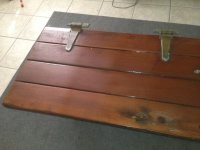...And you can go truly 'anal' (mathematically speaking), or you can high-ball instinctively by feel alone (comfort zone). ...Or a mix of both.
If you want some hints from me; tell me some about your room, size of your speakers, type of music you like, volume level you are comfy and satisfy with, other furniture in that room.
In general, for full range (or tower type) speakers, seven to ten feet distance between them is about right.
And sitting between seven to fifteen feet from them is somewhere around there.
More precisely, for normal tower speakers; 8-9 feet separation between them, and 9-12 feet sitting from them. That's far-field. ...Wide and far enough for the music to gel well together (imaging) during Jazz bands playing, Blues bands, and Classical Chamber music. ...Time arrivals (to your ears). ...Realistic soundstage (width) and depth of field (holography) in a 3-dimensional audio perspective (illusion or magic).

For full Classical Orchestral music (Symphonies, Operas, ...); best is very big speakers, widely separated (10 feet+), and 12-15 feet sitting from them. ...Wide-field.
Near-field; from your PC or Mac.
___________________
Good rules:
- Away from the front wall (3 feet plus; best 5 feet); the rear of your speakers to the front wall.
- Away from the side walls (2 feet plus; 3+ better); and toe-in if your walls are untreated and quite reflective (windows are bad).
- Sitting away from the back wall; always (at least 3-4 feet; 5 feet better).
- The rule of thirds and fifths comes beneficial too.
- The lowest driver in your towers; you don't want it to be the same distance from the floor as to the side wall (measured from its voice-coil).
- And the same is true from the front wall (in case they have to be positioned very close to it).
- Off-center from the two room's middle lines (length and width) is best to not sit there; avoid at any cost (rule of thirds, fifths, sevenths, ... again comes to play).
- If your ceiling is 8 feet high, you don't want your ears at four feet height.
- The amount of toe-in or not will determine the amount of reflections, dispersion, and directivity.
- Even the amount of toe-in vertically can have an important effect (related to your ears' height and height of tweeter/midrange drivers).
- Spikes on carpet are good practice.
- A laser is a good tool.
- Experimentation is also the best tool of them all (your own set of ears).
- But some basic acoustic laws are the first foundation of audio equilibrium (balance).
- An equal amount of low, mid, and high frequencies arriving to your ears at the same time and in phase are key to comfortable auditioning (music listening).
- The quality of the music recording selections are as much as important than everything just above.






